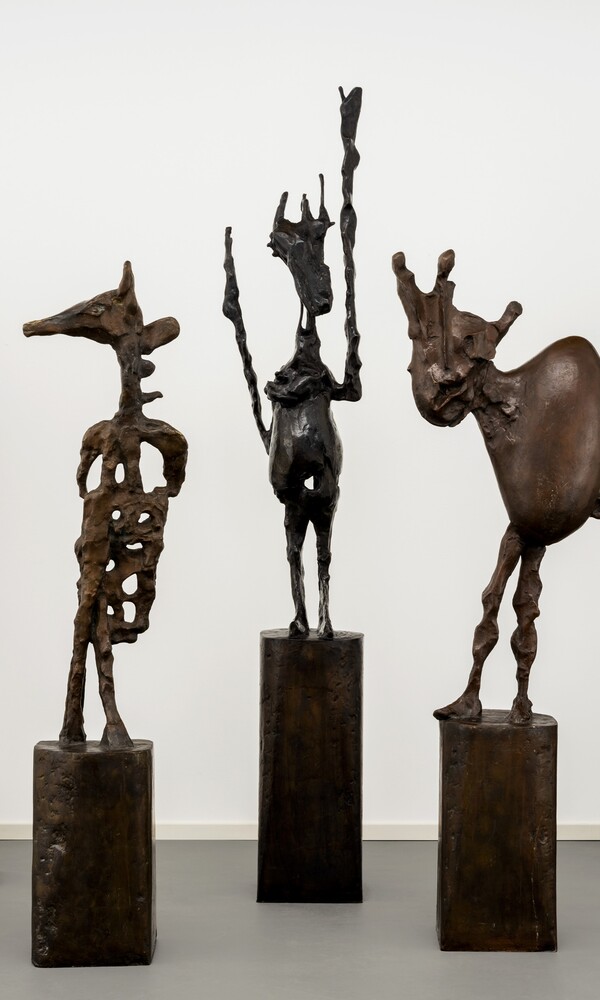Around the mid-20th century humankind was faced with a world in shambles, awaiting an uncertain future. The holocaust and Second World War had revealed which atrocities humans were capable of, and the dropping of atom bombs on Hiroshima and Nagasaki along with the onset of the Cold War carried forward the notion of an existential threat. These disturbing events had decisively altered the image of humanity – a development that brought back the human figure as a dominant theme in art again, particularly in sculpture.
Numerous European artists ceased to follow the tradition and, against the backdrop of their own war experiences, began creating impressively novel artworks. In these works the human figure no longer is unscathed, but is mostly exposed to processes of change and confronted with decomposition and dissolution: human body parts converge into amorphous, ambiguous forms or are supplemented with limbs deriving from animals or plants. The concept of metamorphosis (transfiguration, conversion) became an »epochal phenomenon« in the arts: it combined both the depth and intensity of the crisis and a hopeful dawning of the future.
A majority of the 25 works by 21 European artists featured here are from the 1940s and 1950s. They belong to rich holdings of sculpture from the Modern Art collection of the Hamburger Kunsthalle. You can sight further examples of three-dimensional art on a tour through the collection in the Lichtwark-Galerie on the first floor.
In the series Kleine Reihe der Freunde der Kunsthalle e. V. a publication (12,90 Euro) with contributions by Jasper Warzecha and Karin Schick as well as images of all exhibits is published. It is available in the museum store and online.
Supported by: Freunde der Kunsthalle e. V., Hans-Otto und Engelke Schümann Stiftung
